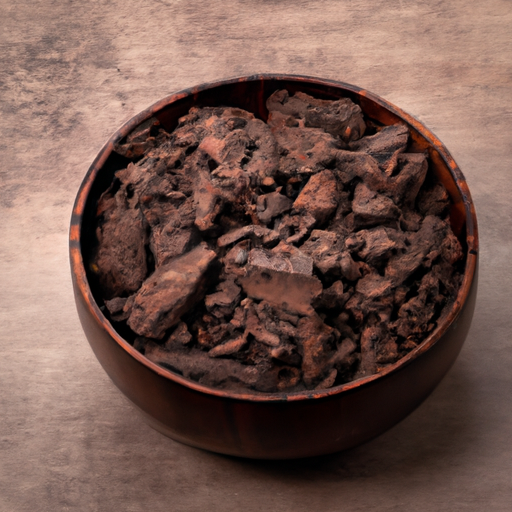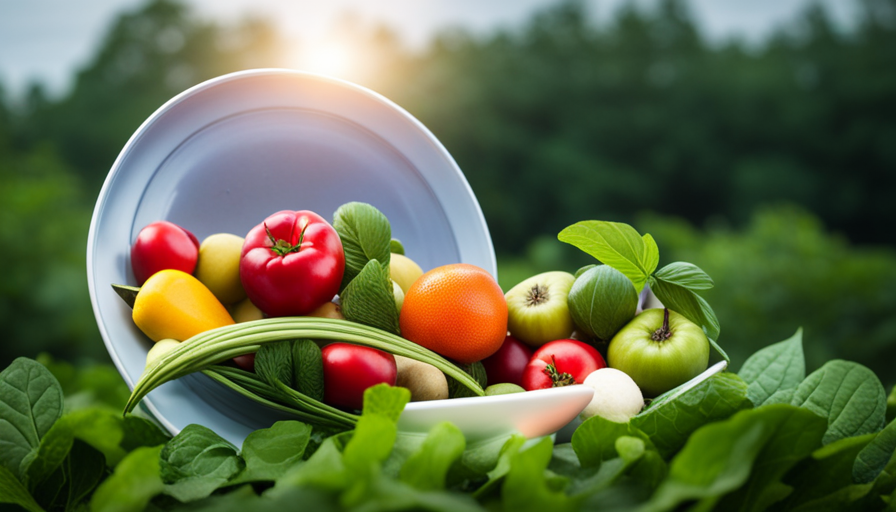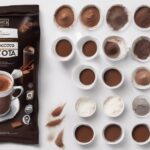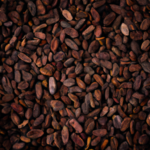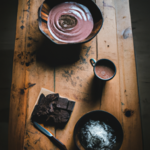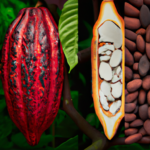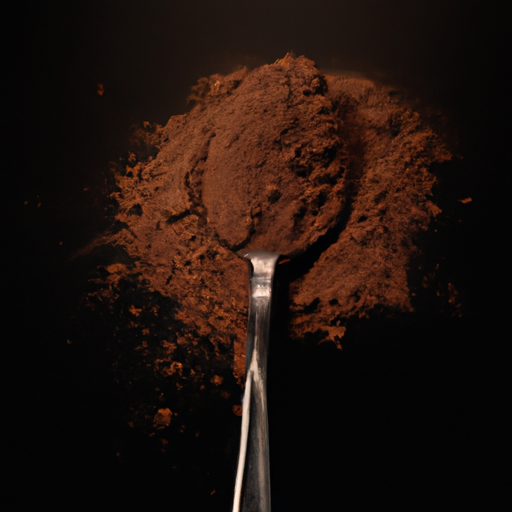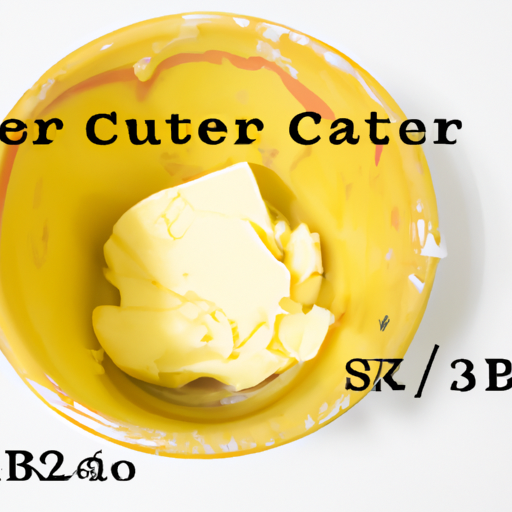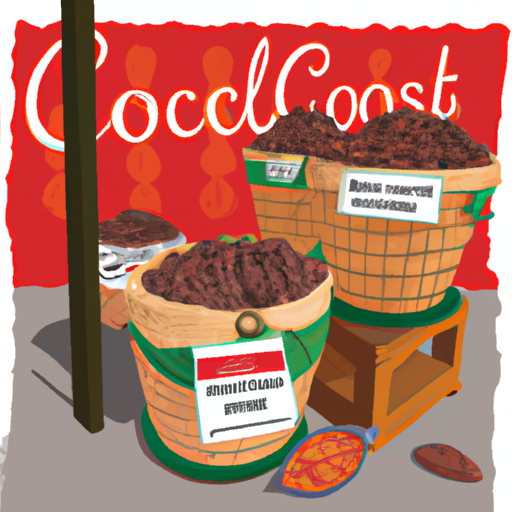If you have ever been curious about the delightful pieces of raw cacao, you have found the perfect spot. Let me explain the mystery to you.
Raw cacao, my friends, is the pure essence of chocolate – untouched and unprocessed. It’s like holding a piece of chocolate’s soul in your hands. But what sets raw cacao apart from regular cocoa? Well, it’s all about the nutrients.
Raw cacao is packed with antioxidants, minerals, and a bliss-inducing compound called theobromine. And let me tell you, this powerhouse ingredient is not just for baking. Oh no, it can be used in an array of culinary creations, from smoothies to decadent desserts.
But not all raw cacao is created equal. Quality matters. So, join me on this journey as we dive into the world of raw cacao, its origins, uses, and the ethical considerations behind its production. Get ready to indulge in the chocolatey wonder that is raw cacao.
Key Takeaways
- Raw cacao chunks are a convenient ingredient for incorporating raw cacao into the diet.
- They provide a rich, chocolatey taste to recipes.
- Raw cacao chunks are a source of antioxidants, magnesium, iron, and fiber.
- They can be easily stored for future use.
Understanding the Difference Between Raw Cacao and Regular Cocoa
If you’re a chocolate lover, you may be wondering what sets raw cacao apart from its more common cousin, regular cocoa.
The main difference between raw cacao and processed cocoa lies in the way they are produced.
Raw cacao is made from the unroasted seeds of the cacao fruit, while regular cocoa is created by roasting these seeds at high temperatures.
This roasting process alters the natural composition of the seeds, reducing their nutritional value.
On the other hand, raw cacao retains its original nutrients, such as antioxidants, minerals, and fiber.
Consuming raw cacao has been associated with numerous health benefits, including improved heart health, enhanced mood, and increased cognitive function.
By choosing raw cacao over processed cocoa, you can maximize the nutritional benefits of this superfood.
The Nutritional Benefits of Raw Cacao
Discover the amazing nutritional benefits you can gain from indulging in these delectable, chunky pieces of pure cacao.
Raw cacao is packed with numerous nutritional properties that can contribute to your overall health and well-being. It is rich in antioxidants, which help protect your body against harmful free radicals and reduce the risk of chronic diseases.
Raw cacao is also a good source of magnesium, iron, and fiber, which are essential for proper muscle function, oxygen transport, and digestion.
Additionally, it contains flavanols, which have been linked to improved cardiovascular health and cognitive function.
Incorporating raw cacao into your diet can provide you with these health benefits and more.
Transitioning into the subsequent section, let’s explore how to use raw cacao in baking and cooking to fully enjoy its flavor and nutritional value.
How to Use Raw Cacao in Baking and Cooking
Get ready to elevate your culinary creations with the irresistible taste and nutritional benefits of raw cacao. Learn how to effortlessly incorporate raw cacao into your favorite baking and cooking recipes.
Using raw cacao in desserts is a fantastic way to add depth and richness to your sweet treats. Substitute cocoa powder with raw cacao chunks for a more intense chocolate flavor in brownies, cookies, or cakes. The natural sweetness of raw cacao allows you to reduce the amount of added sugar in your desserts.
But don’t limit yourself to desserts alone! Incorporating raw cacao into savory dishes can add a unique twist. Add a few chunks of raw cacao to your chili or mole sauce for a complex and earthy flavor.
Now, let’s explore the versatility of raw cacao in smoothies and drinks.
Exploring the Versatility of Raw Cacao in Smoothies and Drinks
Indulge in the rich and velvety goodness of raw cacao by blending it into your favorite smoothies and drinks. This versatile ingredient can create a symphony of flavors that will leave your taste buds dancing with delight.
Here are four ways you can experience the versatility of raw cacao in your beverages:
-
Creamy Chocolate Smoothie: Blend raw cacao with bananas, almond milk, and a touch of honey for a luscious and nutritious treat.
-
Mint Chocolate Chip Shake: Add raw cacao, fresh mint leaves, spinach, and a splash of coconut milk for a refreshing and indulgent smoothie.
-
Cacao Hot Chocolate: Mix raw cacao with hot almond milk, a hint of vanilla extract, and a sprinkle of cinnamon for a cozy and decadent beverage.
-
Cacao Energy Drink: Combine raw cacao with cold brew coffee, almond milk, and a dash of maple syrup for a deliciously energizing pick-me-up.
In addition to its culinary uses, raw cacao also offers versatility in skincare and can be incorporated into desserts.
Now, let’s explore the importance of choosing high-quality raw cacao.
The Importance of Choosing High-Quality Raw Cacao
When seeking out high-quality raw cacao, it is important to consider two key factors: the source of the cocoa beans and the level of processing.
Choosing organic cacao is essential as it ensures the absence of pesticides and harmful chemicals, making it a healthier and more sustainable choice.
In addition to the source, the impact of processing on cacao quality is crucial. Raw cacao that undergoes minimal processing retains a higher concentration of antioxidants, minerals, and vitamins compared to heavily processed alternatives. This preservation of nutrients enhances the potential health benefits of consuming raw cacao.
Now, let’s transition into the subsequent section about tips for storing and preserving raw cacao, to ensure its freshness and longevity without compromising its quality.
Tips for Storing and Preserving Raw Cacao
Imagine the tantalizing aroma of a freshly opened package of high-quality raw cacao, as you carefully store it in an airtight container to preserve its rich and decadent flavors. Proper storage is crucial to maintain the quality of raw cacao and ensure its longevity. There are several effective storing methods and preserving techniques that can help you enjoy the full benefits of this exquisite ingredient.
To keep raw cacao fresh, it is recommended to store it in a cool, dry place away from direct sunlight and strong odors. Additionally, using an airtight container or vacuum-sealed bag can prevent moisture and air from affecting its flavor and texture. Freezing raw cacao is another option, as it can extend its shelf life and preserve its nutritional value. However, it is important to properly wrap and seal it before freezing to avoid freezer burn.
Now that we have explored the best practices for storing and preserving raw cacao, let’s delve into the fascinating history and origins of this remarkable ingredient.
The History and Origins of Raw Cacao
Moving on from discussing the proper storage and preservation of raw cacao, let’s delve into the fascinating history and origins of this versatile ingredient.
The cultivation of cacao dates back thousands of years, with evidence of its consumption found in ancient Mesoamerican civilizations such as the Maya and Aztecs. These cultures revered cacao, using it not only as a food but also as a currency and for ceremonial purposes. The consumption of cacao was seen as a privilege and was reserved for the elite.
Today, the cultural significance of cacao consumption continues to be celebrated in various forms, such as chocolate festivals and rituals. Understanding the rich history of cacao cultivation and the cultural importance attached to its consumption helps us appreciate its value and versatility.
Now, let’s explore the sustainable and ethical aspects of raw cacao production.
The Sustainable and Ethical Aspects of Raw Cacao Production
The sustainable and ethical production of cacao ensures that every bite of chocolate you enjoy supports farmers and protects the environment.
Sustainable farming practices are crucial in the cacao industry to ensure the longevity of the crop and minimize environmental impact. This involves using organic farming methods, such as natural pest control and soil conservation techniques.
Additionally, fair trade practices play a vital role in promoting ethical cacao production. Fair trade certifications guarantee that farmers receive fair wages and work under safe conditions. They also prohibit child labor and promote community development.
By choosing raw cacao produced sustainably and ethically, you can contribute to the well-being of farmers and the preservation of natural resources.
Now, let’s move on to frequently asked questions about raw cacao and its uses.
Frequently Asked Questions About Raw Cacao and Its Uses
Get ready to explore the world of raw cacao and its endless possibilities in your favorite desserts and beverages! Raw cacao, sold in chunks, is a versatile ingredient that can be used in a variety of recipes to add a rich and chocolatey flavor. Not only does raw cacao taste delicious, but it also offers numerous health benefits. It is packed with antioxidants, which help to protect the body against free radicals and reduce inflammation. Raw cacao is also a good source of magnesium, iron, and fiber. Incorporating raw cacao into your diet can support heart health, improve mood, and boost cognitive function. Whether you’re making raw cacao brownies, hot chocolate, or adding it to your morning smoothie, this superfood is sure to enhance both the taste and nutritional value of your creations.
| Recipe | Ingredients | Instructions |
|---|---|---|
| Raw Cacao Smoothie | – 1 ripe banana – 1 tablespoon raw cacao chunks – 1 cup almond milk – 1 tablespoon honey |
1. Blend all ingredients until smooth. 2. Pour into a glass and enjoy! |
| Raw Cacao Energy Balls | – 1 cup dates – 1/2 cup raw cacao chunks – 1/2 cup almonds – 1/4 cup shredded coconut |
1. Blend dates, raw cacao, almonds, and shredded coconut in a food processor. 2. Roll the mixture into small balls. 3. Store in the refrigerator for an easy and healthy snack. |
| Raw Cacao Chia Pudding | – 2 tablespoons chia seeds – 1 cup almond milk – 1 tablespoon raw cacao chunks – 1 tablespoon maple syrup |
1. Mix chia seeds, almond milk, raw cacao, and maple syrup in a jar. 2. Stir well and refrigerate overnight. 3. Top with your favorite fruits or nuts before serving. |
| Raw Cacao Avocado Mousse | – 2 ripe avocados – 1/4 cup raw cacao chunks – 1/4 cup honey – 1 teaspoon vanilla extract |
1. Blend avocados, raw cacao, honey, and vanilla extract until smooth. 2. Transfer to serving bowls and refrigerate for at least 2 hours. 3. Garnish with shaved chocolate or fresh berries before serving. |
Frequently Asked Questions
How long does raw cacao last once opened?
Once opened, raw cacao typically lasts for about 1 year if stored properly. To maximize shelf life, it should be stored in an airtight container in a cool, dark place away from moisture and heat.
Can raw cacao be used as a substitute for regular cocoa powder in recipes?
Yes, raw cacao can be used as a substitute for regular cocoa powder in recipes. It offers health benefits like antioxidants and minerals, and the main difference is that raw cacao is less processed than cocoa powder.
Is raw cacao safe for individuals with chocolate allergies?
Raw cacao can be a safe option for individuals with chocolate allergies. It offers numerous benefits for overall health, such as being rich in antioxidants and minerals. You can incorporate it into your diet through smoothies, desserts, or as a hot beverage.
Can raw cacao be consumed directly without any processing?
Raw cacao is a powerhouse of nutrients! Not only can it be consumed directly, but it also offers numerous benefits like improved mood and heart health. Try adding it to smoothies, oatmeal, or even baking for a healthy boost.
Are there any potential side effects or risks associated with consuming raw cacao?
There are potential side effects and risks associated with consuming raw cacao. While it has potential health benefits, excessive intake can lead to caffeine-related symptoms, digestive issues, and allergic reactions. It is important to consume it in moderation and within the recommended daily intake.
What Are Some Recipes for Using Raw Cacao Sold in Chunks?
When using raw cacao sold in chunks from a reputable raw cacao company manufacturer, there are many delicious recipes to try. You can use the chunks to make rich and indulgent hot chocolate, or incorporate them into raw cacao energy balls for a healthy treat. The options are endless!
Conclusion
In conclusion, raw cacao sold in chunks is a versatile and nutritious ingredient. It can be used in various culinary creations. Some may argue that it is difficult to find high-quality raw cacao. However, it is worth the effort to seek out sustainable and ethically produced options. By choosing this rich and flavorful ingredient, you can enhance the taste and nutritional value of your dishes. Additionally, you will be supporting responsible farming practices. So, why not indulge in the decadent world of raw cacao? Unlock a world of delicious possibilities!

